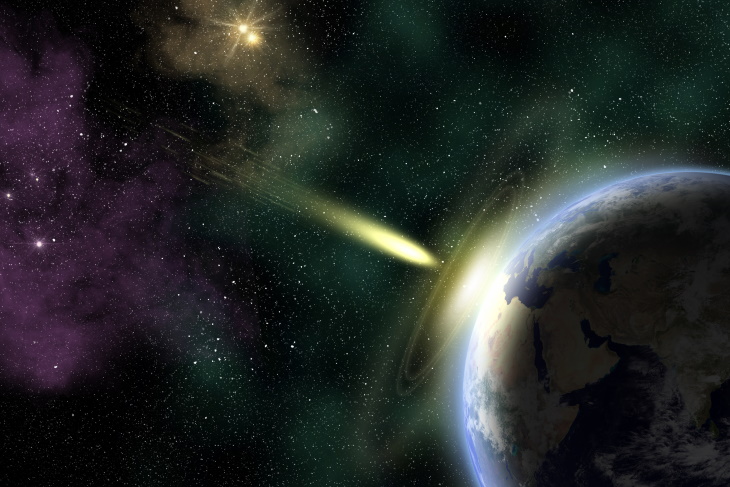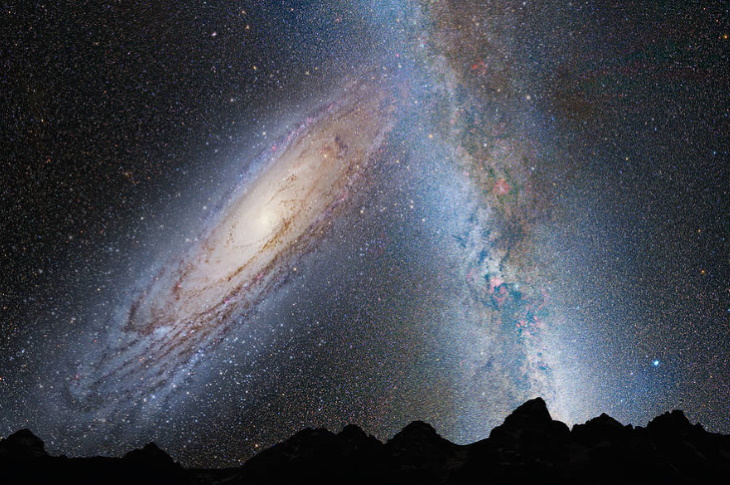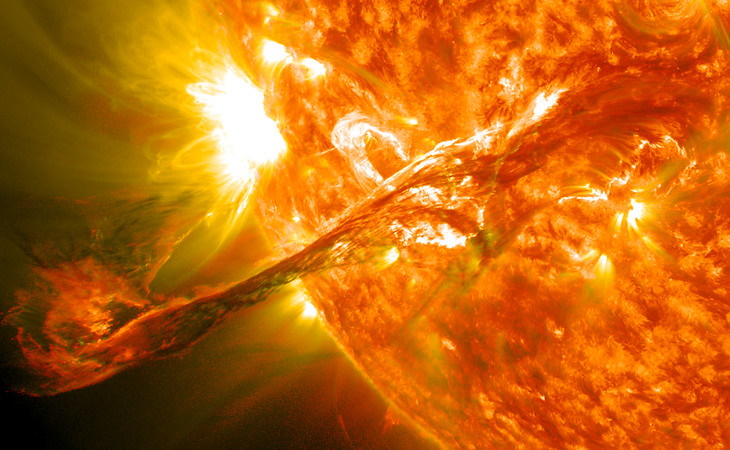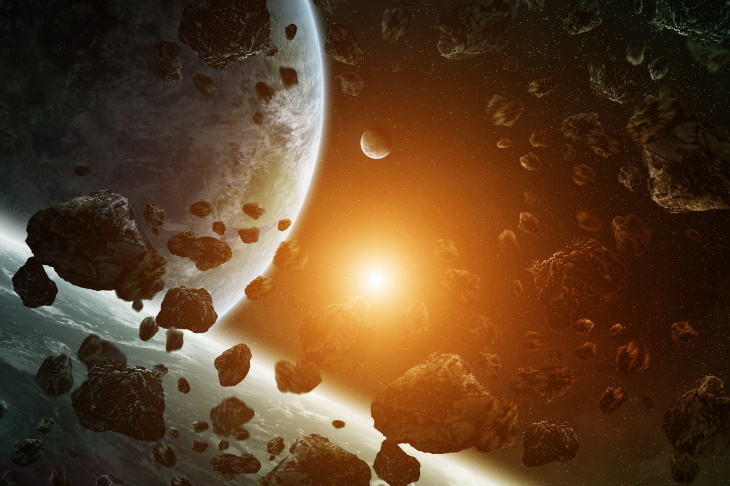

With a long tail zooming past the night sky, a comet is everyone’s favorite cosmic body. But there’s one type of comet that scares the pants off even the biggest space nerds - a megacomet.
In 2021, a megacomet twice the width of the state of Rhode Island flew dangerously close to us. Called comet Bernardinelli-Bernstein (or C/2014 UN271), the comet’s icy nucleus is 50 times larger than the biggest comet previously detected in the Solar System. Bernardinelli-Bernstein measures 85 miles (137 km) in diameter. In fact, the magacomet is so big that it was initially classified by scientists as a small planet.
In comparison, the comet that wiped out the dinosaurs was 7.5 miles (12 km) across or about 7 times smaller. Luckily, the giant comet poses no danger to the Earth. The closest it will be to the Sun is in January 2031, and it will be visible from Earth if viewed through a telescope.

Our neck of the woods - the Milky Way galaxy - has an annoying neighbor problem. Luckily, the obnoxious Andromeda galaxy is still 2.5 million light-years away from Earth. But one day, as the universe continues expanding, Andromeda will collide with the Milky Way.
But worry not, we and even our grandkids won’t witness the collision in our lifetime. According to NASA, Andromeda won't be here for another 3-5 billion years, though it is said to dominate the night sky, competing with the Milky Way, long before then, looking something like the artistic interpretation in the image above.

Here’s a lesson we’ve all learned in first-person this summer - the Sun is no joking matter. But let’s expand on this idea a bit further. The Sun is continuously sending high-energy particles toward our planet, but we don’t notice most of them because the Earth's magnetic field reflects the majority of these solar attacks.
But our planet and technology are powerless against more powerful solar attacks called solar flares. These sudden flashes of light release vast amounts of energy into space, causing a geomagnetic storm here on Earth. In every decade, the risk of such a powerful geomagnetic storm occurring is between 1.6-12% according to a report by Live Science.
And the results of a massive solar flare can be devastating, causing anything from power blackouts to communication disruptions worldwide. The strongest of such storms in recent history called the Carrington Event was in 1859, predating modern technology by decades. If a similar event was to happen today, it would likely result in a communications apocalypse that would leave humans without the internet for months.

When a star dies, it collapses in a colossal explosion called a supernova, blazing with the power of a hundred suns and wiping out everything within its 40-50 light-year kill zone. The good news is, that there are no known stars ready to go supernova within that distance to Earth. But there is a red giant star called Betelgeuse which astronomers believe is about to blow anytime.
Betelgeuse is 650 light-years away from the Earth, so it is unlikely to impact the Solar System. However, scientists are leaving the possibility that the potent X-rays and gamma-rays emitted from a supernova could potentially affect the Earth's ozone layer. Although no such concerns have been claimed in connection to Betelgeuse specifically.

How many apocalyptic plots start with an asteroid colliding with the Earth? That’s right, there’s too many to count. This fear of asteroids is by no means ungrounded. After all, these massive rocks flying through the cosmos are the most numerous objects in the Solar System.
According to data provided by the European Space Agency's Gaia telescope, there are 150,000 objects in the Solar System, and the vast majority of them are asteroids. The same research project suggests that the number of asteroids is 10 times higher than previously estimated. Yikes!
Before you get convinced that we’ll all follow the fate of dinosaurs very soon, know that scientists are actually very good at detecting and tracking asteroids early. Scientists claim they have detected around 90 percent of "planet-killer" sized asteroids near Earth.
But is there anything we could do about an incoming asteroid? Find more on that topic here - The Ways Scientists Prepare For an Asteroid Attack.

The next stage in a star’s life cycle after exploding in a supernova is becoming a black hole. At the dense center of the supernova, gravity becomes so strong that nothing, not even light, can escape from it. And for those who think that black holes are rare, we’re here to disappoint you (sorry). In the Milky Way alone, there are estimated to be 100 million black holes!
And if that isn’t scary enough, it turns out that many of these black holes can wander through the universe too. Known as “rogue” black holes, these massive cosmic bodies move through galaxies, sucking in everything on their way. In fact, researchers at the Hubble Space Telescope found one of these rogue black holes in the Milky Way 5,000 light-years from Earth. This terrifying object is 7 times heavier than the Sun!
H/T: Live Science